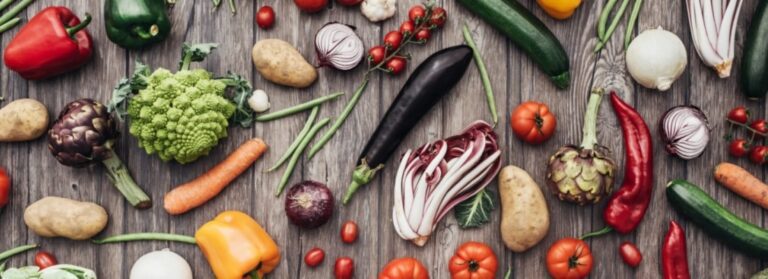Both the vegetarian and vegan diets, originally designed for those concerned with the well-being of animals, have become very popular in Italy. Many Italians choose this diet not only for ethical reasons or concerns over animal cruelty, but also for their individual health and out of respect for the environment.
Those who eat a vegetarian or vegan diet pay more attention to choosing plant-based products that are in season, opting for healthier, fresh foods which have a smaller environmental footprint, all of which results in improved health and increased vitality.
In Italy, this recent surge of interest in these two diets has brought the country back to its traditional Mediterranean roots, where meals are primarily based on vegetables and grains, with no animal fats. Instead, the classic condiment is none other than extra virgin olive oil – an incredible natural source of flavor, full of beneficial properties.
Traditional Mediterranean Vegetarian and Vegan Dishes in Italy
The types of meals in Italy’s repertoire that meet the requirements of these two diets are plentiful and delicious. It would be impossible to make an exhaustive list of all of Italy’s vegetarian dishes. However, some of the most traditional vegetarian options include: the renowned eggplant parmesan, linguini with pesto, tortellini with a vegetable filling (pumpkin, ricotta cheese, spinach, mushrooms), “pasta alla norma” (made with eggplant, tomato sauce, and ricotta cheese), “la toscana acquacotta” (a type of vegetable soup with pecorino cheese), and many, many more.
On the other hand, vegan options include: “la ribollita” (a vegetable soup with beans); artichoke “alla giudia” (deep-fried) and “alla romana” (marinated and braised); “la vignarola laziale” (a stew with beans, peas, artichokes, and lettuce whose name comes from the practice of winegrowers to plant vegetables between the rows of vines); tomatoes with rice, served with roasted potatoes; Sicilian eggplant “caponata;” “il maccu” from Puglia (a delightful dish made from mashed beans and wild chicory, sweet and sour onions, and fried bell peppers); “la farinata” (a type of savory “pancake” made from chickpeas); and an infinite number of different types of focaccia. You can enjoy any of these incredible dishes right in the territories they come from, along with all the other culinary traditions, during your vegetarian and vegan Italy travels.
In Italy, most traditions around eating meat came more from economics than ethics. Eating meat was never an everyday thing. It was mostly tied to holidays, because meat was an expense most people couldn’t afford, though that has changed as ranching methods have focused more on volume. In addition, the majority of Italians (excluding those who lived in cities) had some type of garden plot or access to open land that whose produce provided, in large part, for a family’s survival.
Today, volume-based, industrialized ranching has become more widespread, though Italy is a latecomer in respect to the United States (where it began fifty years earlier). In Italy, it started with chickens (which brought the 1970’s tradition of rotisseries that sold both chicken in the regular roasted and the spicy “alla diavola” varieties). Later, this modernized ranching technique was applied to pigs (which led to an increase in the production of sausage), and finally to cattle. The decreased cost of meat made it so an artichoke became more expensive than a chicken thigh, and led to a widespread adoption of a less healthy diet and the spread of its associated illnesses.
There is a bright side to this. The cruel and unnatural practices required for this type of ranching, the heavy use of antibiotics on animals, and the alarms raised by eminent oncologists on the health risks associated with the excessive consumption of meat have all led to Italy’s return to its former, healthier habits. This return to better ways has not only brought Italian cuisine back to its more authentic state, but has also influenced how vegetables and grains are produced. Today, many young people have discovered the joy of gardening (something that was previously only for the “veg chic,” but which has now become much more than just a fad). And even among farmers with proper farmlands there is a growing interest in cultivating crops without the use of pesticides or GMO seeds, and in returning to the practice of rotating crops by no longer trying to grow unsustainable crops in order to renew once sterile soil and give it new life. Your vegetarian and vegan Italy travels in this beautiful country will be one of both good health and great flavors.
Vegetarian and Vegan Culture in Italy Today
Without having to do much culinary experimentation, our chefs have amassed an extraordinary amount of knowledge of agrarian traditions, such as the use of once-forgotten medicinal herbs, like nettle, and other roots, flowers, tubers, seeds, and wild fruits. They’ve also brought back some ancient grains, which had been neglected as the farming industry focused on grains with a higher gluten content that could produce a softer dough and was more resistant to high temperatures. These grains, which have been cultivated since neolithic times, include farro, and other lesser-known varieties such as “grano del miracolo,” khorasan, and the indigienous saragolle. These offer an excellent alternative to those who have food allergies, yet still provide excellent nutrition.
The best vegetarian and vegan restaurants throughout the world have been catalogued in the Green Guide 2020. Within this book’s pages, Italy is featured often, with a whopping 31 Italian restaurants listed. It also mentions Italy’s awards for the creative use of seasonal products; the quality of local produce; the exclusive use of fresh vegetables; the lack of added sugars, flavorings, preservatives; and the high standards for sustainability.
Vegetarian and Vegan Italy Travels
So whether you’re vegetarian or vegan, a tour with Italy Trails will not leave you wanting. It doesn’t matter if you come to learn about the culture, to have a relaxing vacation among Italy’s beautiful natural landscapes, or if you’re there just for the great food and wine. Regardless, you’ll be able to experience some of the best vegetarian and vegan Italy travels as you experience every aspect of our culinary traditions, region by region.


Contact our team for your trip to Italy
Contact us without obligation to make travel plans! If you wish, we can start a videoconference so we can get to know each other better.
